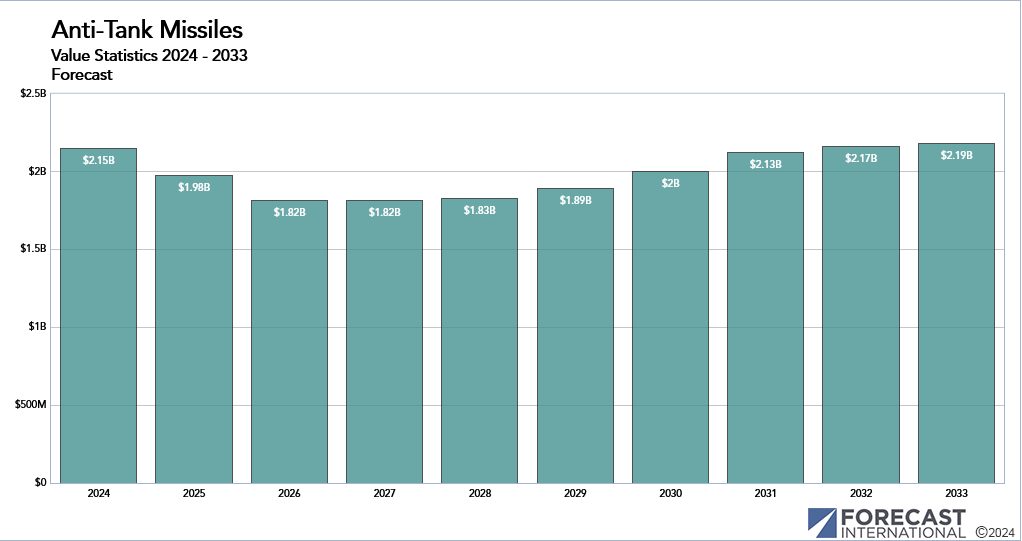“This time, for sure, the tank is dead.”
Despite the repeated predictions of the tank’s demise, the anti-armor missile market continues to thrive. The ongoing Russo-Ukrainian War has once again highlighted the enduring value of these weapons, dispelling notions of their obsolescence.
While the tank’s role in future military operations may evolve, it remains a significant factor in driving demand for anti-armor missiles. The conflicts in Afghanistan, Iraq, Lebanon, and Libya, as well as the ongoing war in Ukraine, have demonstrated the effectiveness of these missiles against both armored vehicles and fortified structures.
According to Forecast International’s upcoming The Market for Anti-Tank Missiles 2024-2033 analysis, the anti-armor missile market is expected to be worth $20 billion during the forecast period, with the production of 258,779 missiles. While annual production may decline in the short term, it is anticipated to rise again in the future.

The U.S. and Europe are working on new missiles to meet the needs of different military services. The U.S. Joint Air-to-Ground Missile (JAGM) program appears to be avoiding the fate of its predecessor – the Joint Common Missile (JCM) program. However, the JAGM has seen a series of changes to its in-service date.
Europe is moving to develop new anti-armor missiles and hold on to its share of this market. The MMP (Akeron MP) and MLP programs aim to replace the MILAN and HOT, respectively. MBDA is working to interest more European companies in participating in these programs.
U.S. firms, such as Lockheed Martin and Raytheon (including their Javelin joint venture), are the leading players in this market, accounting for a combined 28 percent value share. Europe’s position has declined to around a 19 percent value share but is expected to improve with the development of new systems.

Looking ahead, the market could experience an evolution similar to that of anti-ship missiles, with a growing emphasis on multi-purpose weapons capable of engaging a wider variety of targets. The continued demand for anti-armor missiles underscores their enduring importance in modern warfare.
Subscribers can view all of the analyses and forecasts by logging into their Forecast International Intelligence Center. To inquire about subscribing, visit www.forecastinternational.com
For more than 35 years, Larry has been involved in research and analytical work for various Forecast International projects. He has contributed to the Airborne Electronics Forecast and was chief editor on the World Aerospace Weekly newsletter. Larry was directly responsible for the creation of World Weapons Review, a biweekly industry market research publication specializing in weapon systems and related material. He was the creator of Unmanned Vehicles Forecast, launched to cover the growing market for civil and military drones, and was involved in the development of the Airborne Retrofit & Modernization Forecast service. He is currently responsible for the Missile Forecast and for FI's two Unmanned Vehicles Forecast services – Airborne Systems and Land & Sea Systems.




